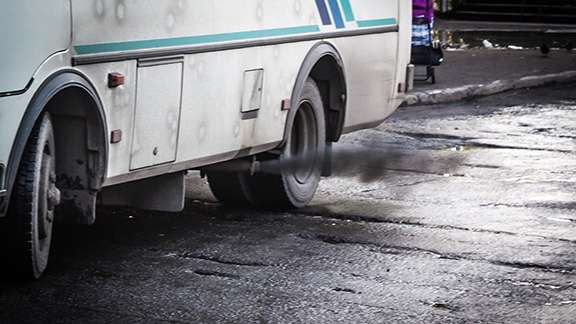Researchers recommend steps to reduce diesel-burning emissions in Russia

Researchers at Pacific Northwest National Laboratory, working at the Joint Global Change Research Institute in Maryland, assessed the options and challenges of reducing soot emissions-also known as black carbon-from diesel vehicles in Russia.
Russia has already implemented several steps to reduce soot emissions including emission standards for on-road vehicles that have had a strong emission reduction effect, and increased production of ultra-low sulfur diesel to enable use of emission controls devices. In addition, the researchers recommend further improvements in vehicle inspection mechanisms and procedures to ensure that high-emitting vehicles are banned from the roads.
"While the Russian government is focusing on emission reductions from on-road transport, off-road vehicles are also releasing a significant share of soot emissions," said a PNNL postdoc research associate and atmospheric scientist Dr. Nazar Kholod. "In the Arctic, off-road emission sources, such as mining vehicles and diesel generators, are a dominant source of emissions."
To reduce future soot emissions, the researchers advise introducing emission standards for off-road vehicles and stationary sources.
Soot, also called black carbon, is a by-product of incomplete diesel combustion. Soot has adverse health impacts, causing cardiopulmonary disease and lung cancer. Soot also has a large effect on climate warming, as a short-term climate forcer. Soot emissions from Russian diesel sources affect not only the Russian territory but also contribute to overall, wide-area pollution.
"Russia faces many challenges in reducing emissions because of political, economic and technological constraints," said Kholod. "However, the country has a significant potential for black carbon reductions which would bring benefits to the Russian population and the environment, both locally and globally."
PNNL researchers analyzed current ecological standards for vehicles and fuel, evaluated policies for emission reductions from existing diesel vehicle fleet, and assessed Russia's attempts to encourage the use of natural gas as a vehicle fuel. This study is built on the project in the Murmansk region where researchers from PNNL and their Russian collaborators developed a detailed inventory of diesel sources including on-road vehicles and off-road sources.
Researchers are working on a Russia-wide inventory of black carbon emissions from diesel sources. A national emission inventory, an extension of the Murmansk emission inventory, will be developed by March 2017, providing a data set for modelers to improve the quality of regional and global models.
More information: Nazar Kholod et al. Reducing black carbon emissions from diesel vehicles in Russia: An assessment and policy recommendations, Environmental Science & Policy (2016). DOI: 10.1016/j.envsci.2015.10.017
Provided by Pacific Northwest National Laboratory


















